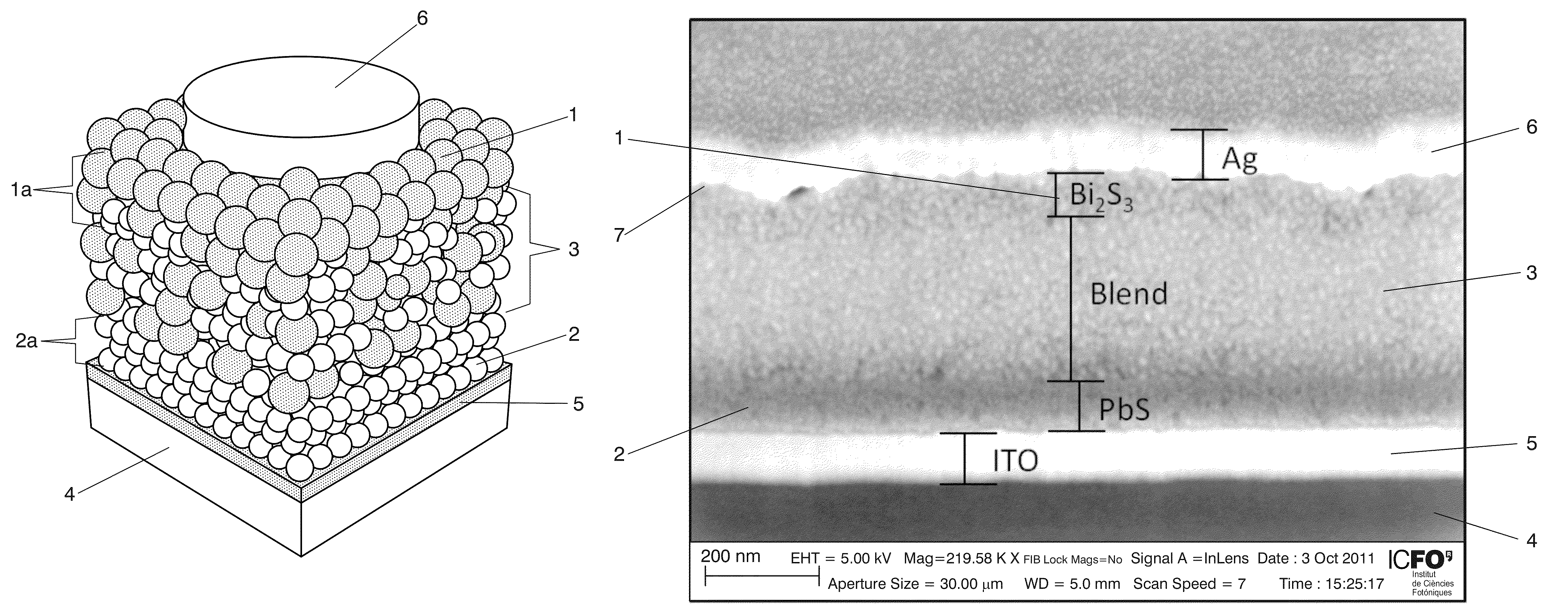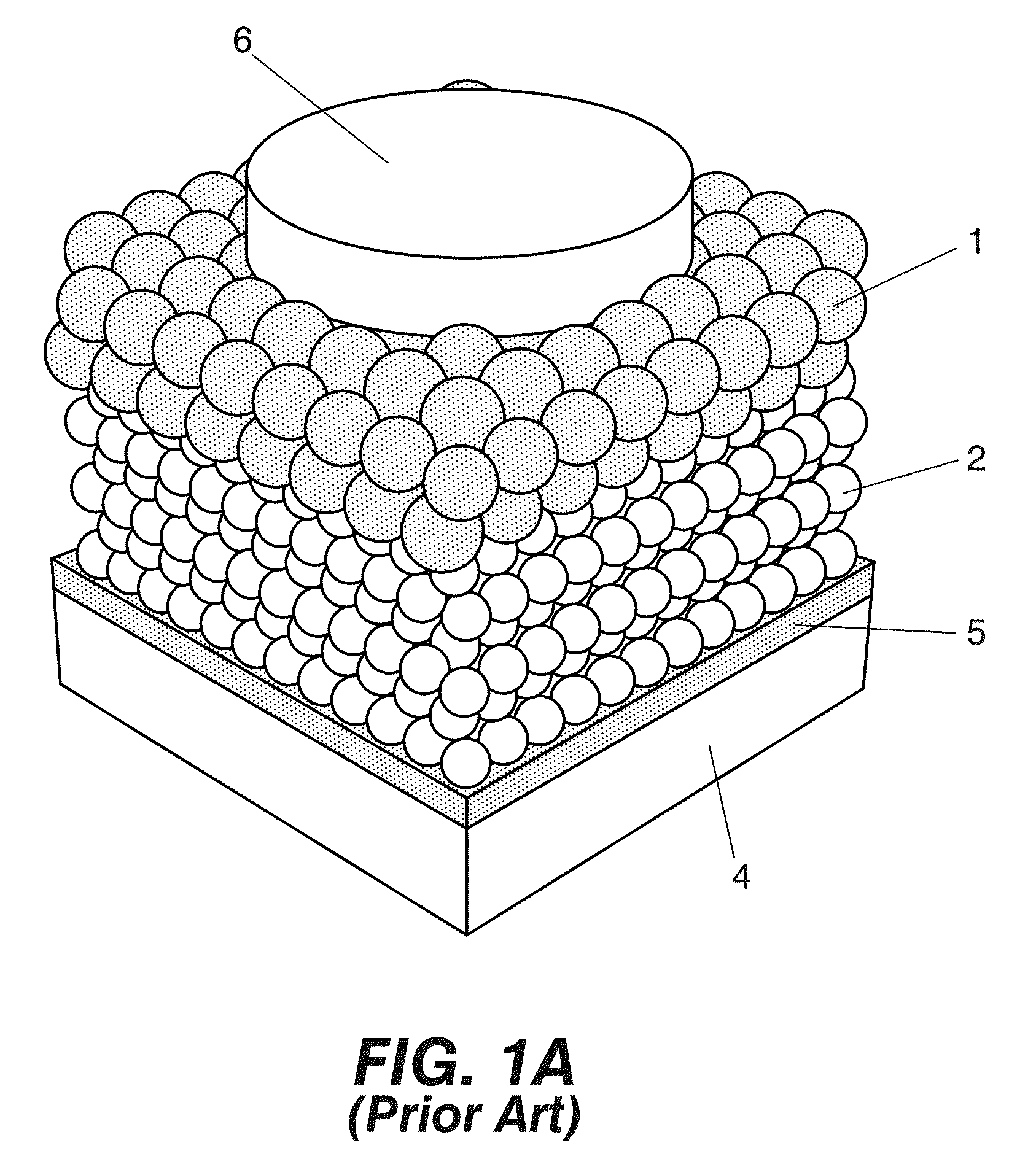Photovoltaic nanocomposite comprising solution processed inorganic bulk nano-heterojunctions, solar cell and photodiode devices comprising the nanocomposite
a photovoltaic and nano-heterojunction technology, applied in the field of nano-crystal films, can solve the problems of limited material availability of nanomaterials, small fraction of available semiconductor materials exploited, and limited control of carrier doping
- Summary
- Abstract
- Description
- Claims
- Application Information
AI Technical Summary
Benefits of technology
Problems solved by technology
Method used
Image
Examples
Embodiment Construction
[0010]The present invention is intended to overcome the afore mentioned drawbacks of prior art by providing a photovoltaic nanocomposite and a solar cell device comprising the photovoltaic nanocomposite.
[0011]According to the invention, the photovoltaic nanocomposite comprises a film of solution processed semiconductor materials comprising a n-type material selected from n-type quantum dots and n-type nanocrystals, and a p-type material selected from p-type quantum dots and p-type nanocrystals, wherein
[0012]the n-type material has a conduction band level at least equal, compared to vacuum level, to that of the p-type material,
[0013]the p-type material has a valence band at the most equal, compared to vacuum level, to that of the n-type material.
[0014]at least a portion of the n-type material and at least a portion of the p-type material are present in a bulk nano-heterojunction binary nanocomposite layer comprising a blend of the n-type material and the p-type material.
[0015]The p-t...
PUM
| Property | Measurement | Unit |
|---|---|---|
| thickness | aaaaa | aaaaa |
| thickness | aaaaa | aaaaa |
| thickness | aaaaa | aaaaa |
Abstract
Description
Claims
Application Information
 Login to View More
Login to View More - R&D
- Intellectual Property
- Life Sciences
- Materials
- Tech Scout
- Unparalleled Data Quality
- Higher Quality Content
- 60% Fewer Hallucinations
Browse by: Latest US Patents, China's latest patents, Technical Efficacy Thesaurus, Application Domain, Technology Topic, Popular Technical Reports.
© 2025 PatSnap. All rights reserved.Legal|Privacy policy|Modern Slavery Act Transparency Statement|Sitemap|About US| Contact US: help@patsnap.com



